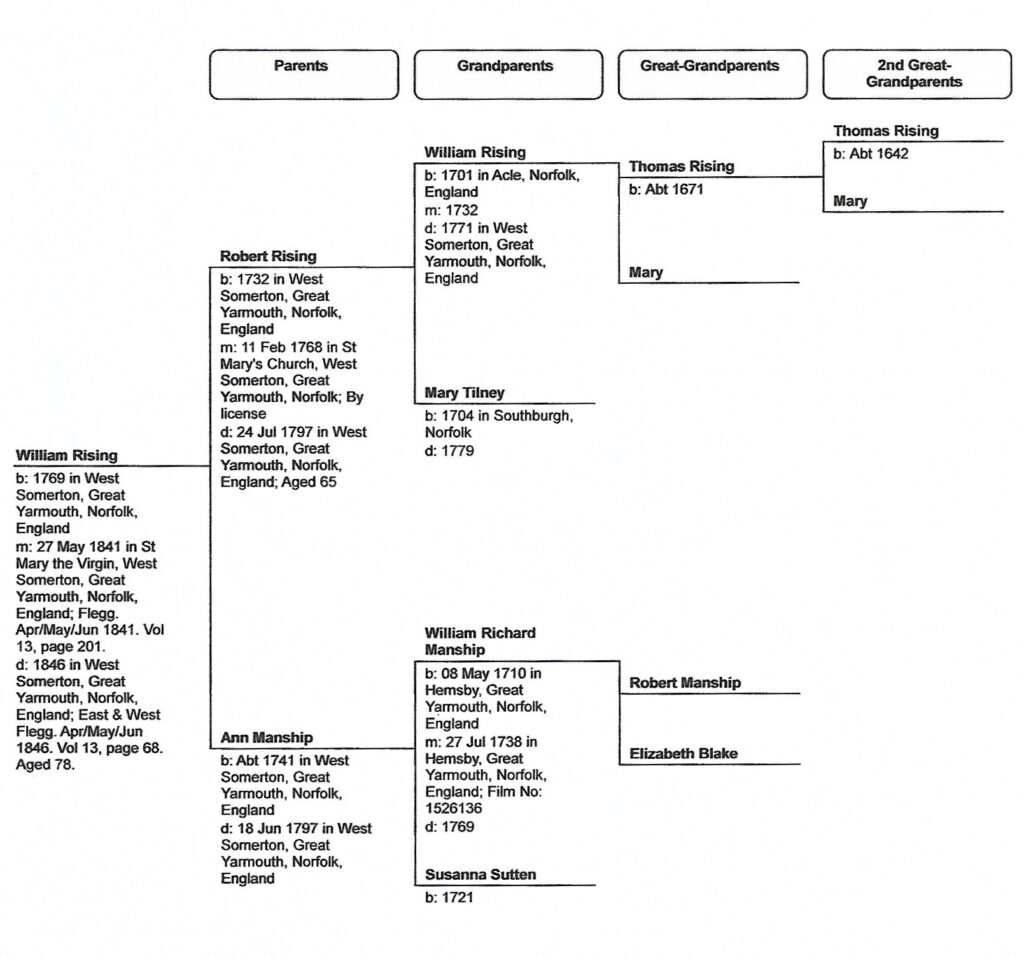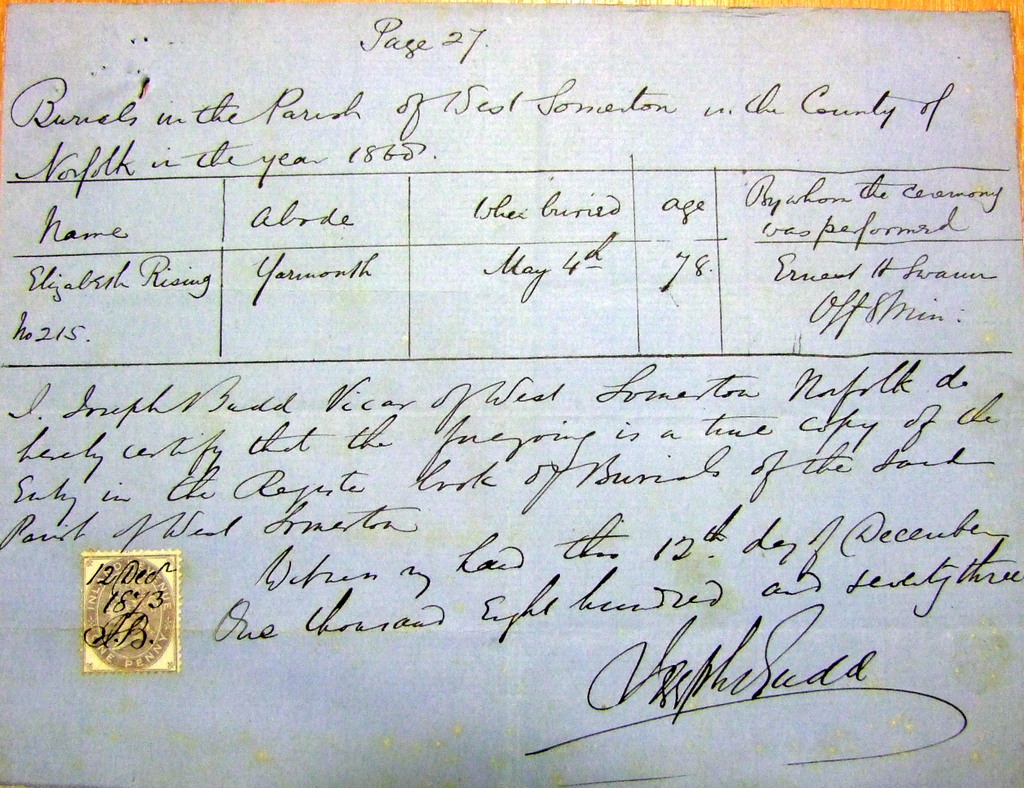William Rising (1769-1846) of West Somerton and Martham.
Plus his wives Mary Ann Page and Elizabeth Howes
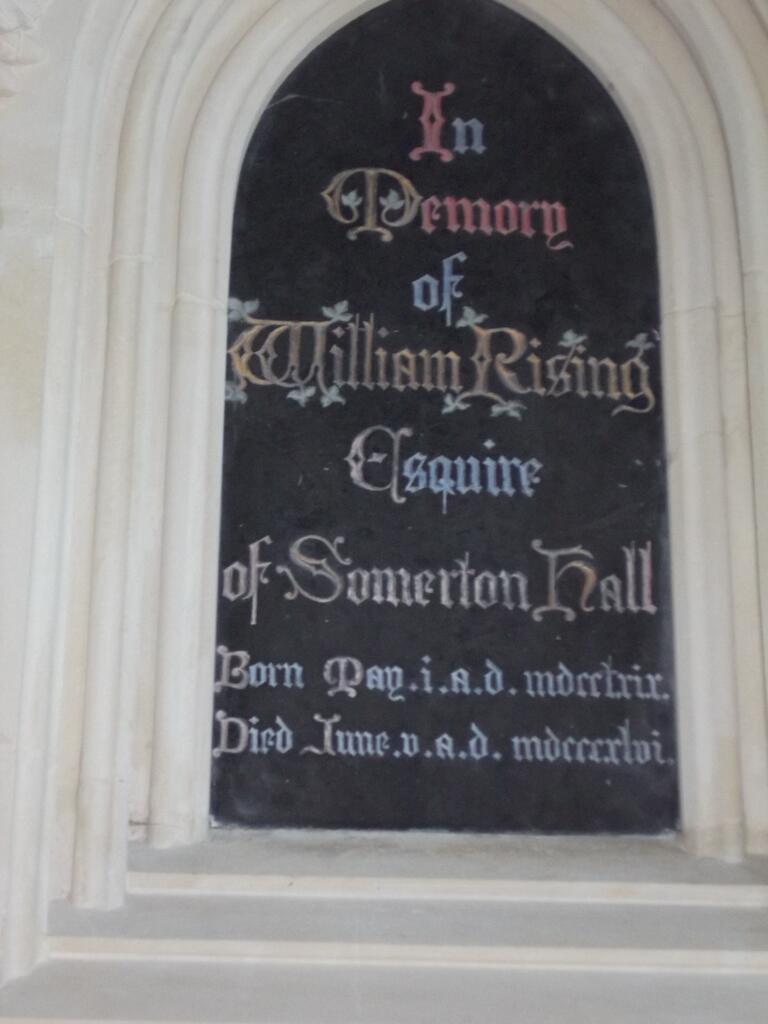
William Rising was born in 1769 at West Somerton, Norfolk as the second child of Robert Rising & Ann Manship. He was baptised on 3rd May 1769 at St Mary the Virgin, West Somerton. He had thirteen siblings, namely: Robert, Stephen, Tilney, Mary, Edward, Thomas Sutfield, Benjamin, John, Anne, George, Charles, Rebecca and Frances.
In 1815 he wrote a diary about his daily life, farming and family. It gives a wonderful insight into life in rural Norfolk at the time. You can read more about it by clicking HERE.

When he was 23, he married Mary Ann Page by licence on 30th October 1792 at Ludham, Norfolk. William was a bachelor and Mary a spinster. The witnesses at the marriage were John Page & Mary Rising – his sister. The Bury and Norwich Post published an announcement on 7th November 1792 of the marriage between Mr Wm. Rising, farmer, of Martham to Miss Mary Ann Page of Ludham saying the marriage was on yesterday fortnight.
William was farming at Moregrove, Martham from about 1789 until about 1797 when he moved to West Somerton to take over that estate just before his parents died in 1797. William was a ratepayer, churchwarden and overseer at Martham during this period.
Meanwhile William and Mary, his first wife, seem to have become estranged. In those days divorce was rare mainly because it was very expensive or needed a special Act of Parliament and although William was a well-off farmer, he was not really wealthy enough to afford a divorce, not that we know he wanted one. In similar circumstances people were just obliged to live separate lives. In legal terms they remained married but apparently not cohabiting. Eventually Mary died on 28th April 1841 but long before that William lived for many years with a lady called Elizabeth Howes with whom he had six children before, when he was 72, they eventually married a month after his first wife died. He married Elizabeth Howes on 27th May 1841 at St Mary the Virgin, West Somerton. She was the daughter of Richard Howes & Ann Neave.
William and Elizabeth had the following children:
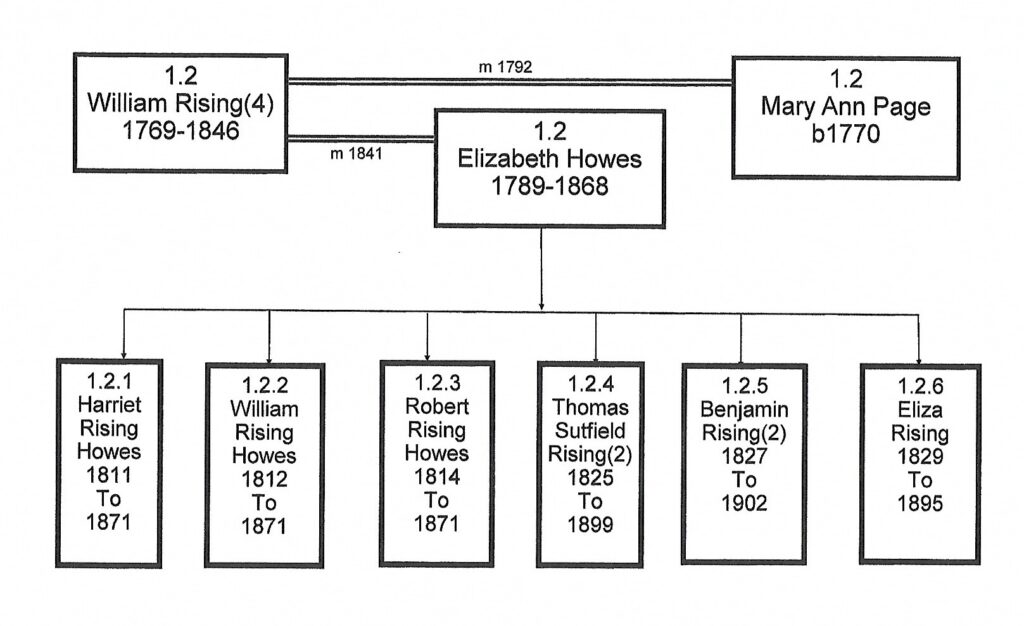
- Harriet Rising Howes was born on 5th February 1811 at West Somerton Hall. She married William Harrison Wells on 9th May 1832 at St Mary the Virgin, West Somerton. She died on 16th July 1871 in Norwich.
- William Rising Howes was born on 24th September 1812 at West Somerton Hall. He married Martha Walpole on 18th September 1860 at Pancras, London. He died on 7th September 1871 at Martham, aged 58.
- Robert Rising Howes was born in about 1814 at West Somerton Hall. He married Mary Hawkes on 24th June 1841 at St Mary, Bryanston Square, Marylebone, London. He died on 7th September 1871 at Row 59, Great Yarmouth, aged 58.
- Thomas Sutfield Rising was born in September 1825 at West Somerton Hall. He did not marry and died on 29th July 1899 at Martham, aged 74.
- Benjamin Rising was born in 1827 in West Somerton Hall. He became a vicar and married Sarah James in 1862 in Newport, Shropshire. He died on 29th August 1902 at 19 West Parade, Rhyl, Flintshire, Wales.
- Eliza Rising was born in 1829 at West Somerton Hall. She married James Bane on 4th August 1870 at St Nicholas Church, Great Yarmouth. She died in 1895 at High Road, Southtown, Great Yarmouth.
Note that there is a big gap between 1814 and 1825 and the birth of his 3rd and 4th child with Elizabeth and during this eleven-year mystery period he is not shown in any other records. Was he attempting a reconciliation with his first wife Mary Ann? What was he doing?
You may also have noticed that the first three of William & Elizabeth’s children all died (as adults after their own deaths) in 1871. They were:
Robert Howes Rising 1814-1871 (the husband of Mary Hawkes);
William Howes Rising 1812-1871 (the husband of Martha Walpole);
Harriet Howes Rising 1811-1871 (who married William Wells).
In addition two of Harriet’s children William and Harriet Wells also both died in 1871. This family tragedy may have been a coincidence but it is also possible they could have all succumbed to smallpox as there was an epidemic in England in 1871.
The 1812 Martham Inclosure Award shows that William owned 171 acres of land in Martham which included three houses, three barns two stables and several outbuildings. Most of the land was to the north and east of Martham on the Somerton border, off Somerton Road; in the area of Martham House and two plots of marsh (No177 & 178) at Cess near the River Thurne. The plots were listed as Nos 30,33,34,35,36,39,50,51,52,60,62,88,89,177 & 178 and most are shown in pink on the 1812 map below.
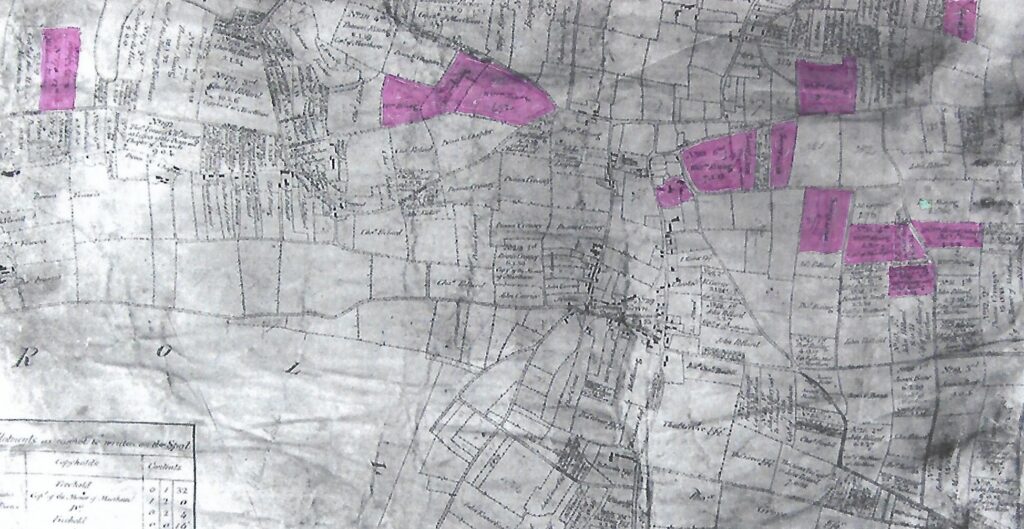
The above land was in addition to other land he owned at West Somerton where the Inclosure Award was made in 1811 and he was allotted 24 parcels of land. The land he farmed at West Somerton is shown on the sketch map below.
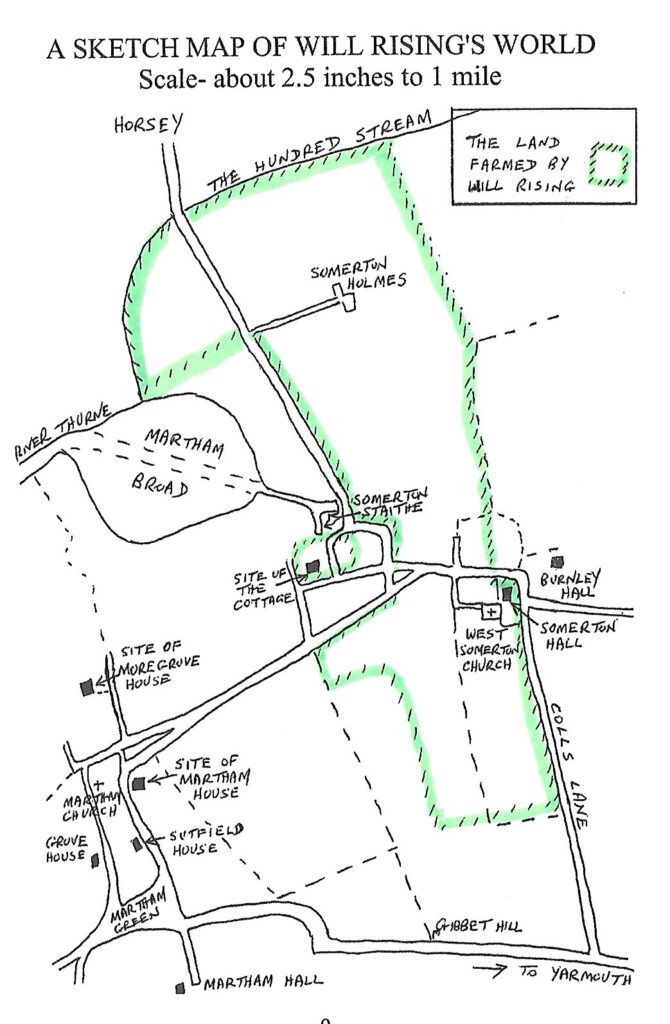
William appeared in the Electoral Registers of 1832 & 1835 for West Somerton and was listed in the 1841 census as living at West Somerton Hall, West Somerton.
By the time of the 1842 Martham Tithe Award William owned a little over 260 acres of land in Martham in addition he also owned considerable amounts of land at West Somerton. The plots he owned at Martham were numbered 81*, 141,142*,143,154*,155,171,186, 214,215*,216, 223, 253,255,264,265,266, 279, 283,283a,284,288, 295,297,298, 316*,316a, 345,348*,349*, 350,351,352,353, 366,367,368,369,370, 412*, 470,471,472, 488,489, 509,510, 592,593,594, 633,634, 654*, 694, 715,721,722, & 723.
Several of these plots included cottages or houses which were let and likewise the arable land he owned was mostly let to others rather than farmed by William himself.
Many other plots were owned by his brothers Thomas (36 acres) and George (131 acres).
Towards the end of his life William lived at Martham House, White Street, Martham for a couple of years but died in 1846 at West Somerton Hall, aged 78. He was buried in the Chancel of West Somerton Church where there is a memorial to him which is shown at the top of this page.
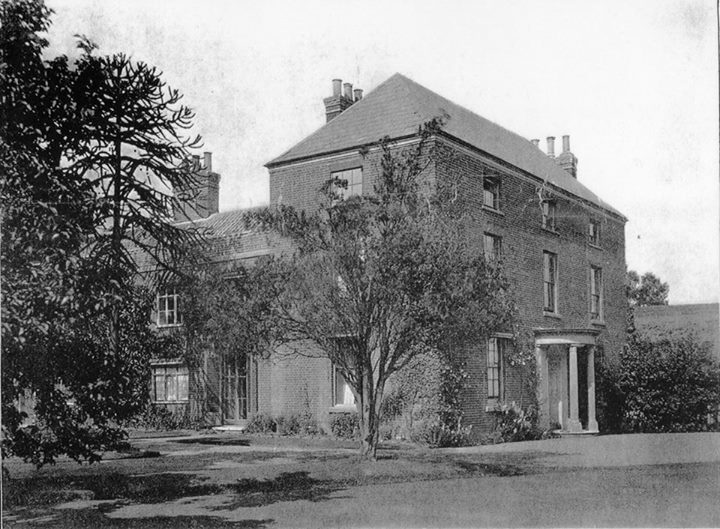
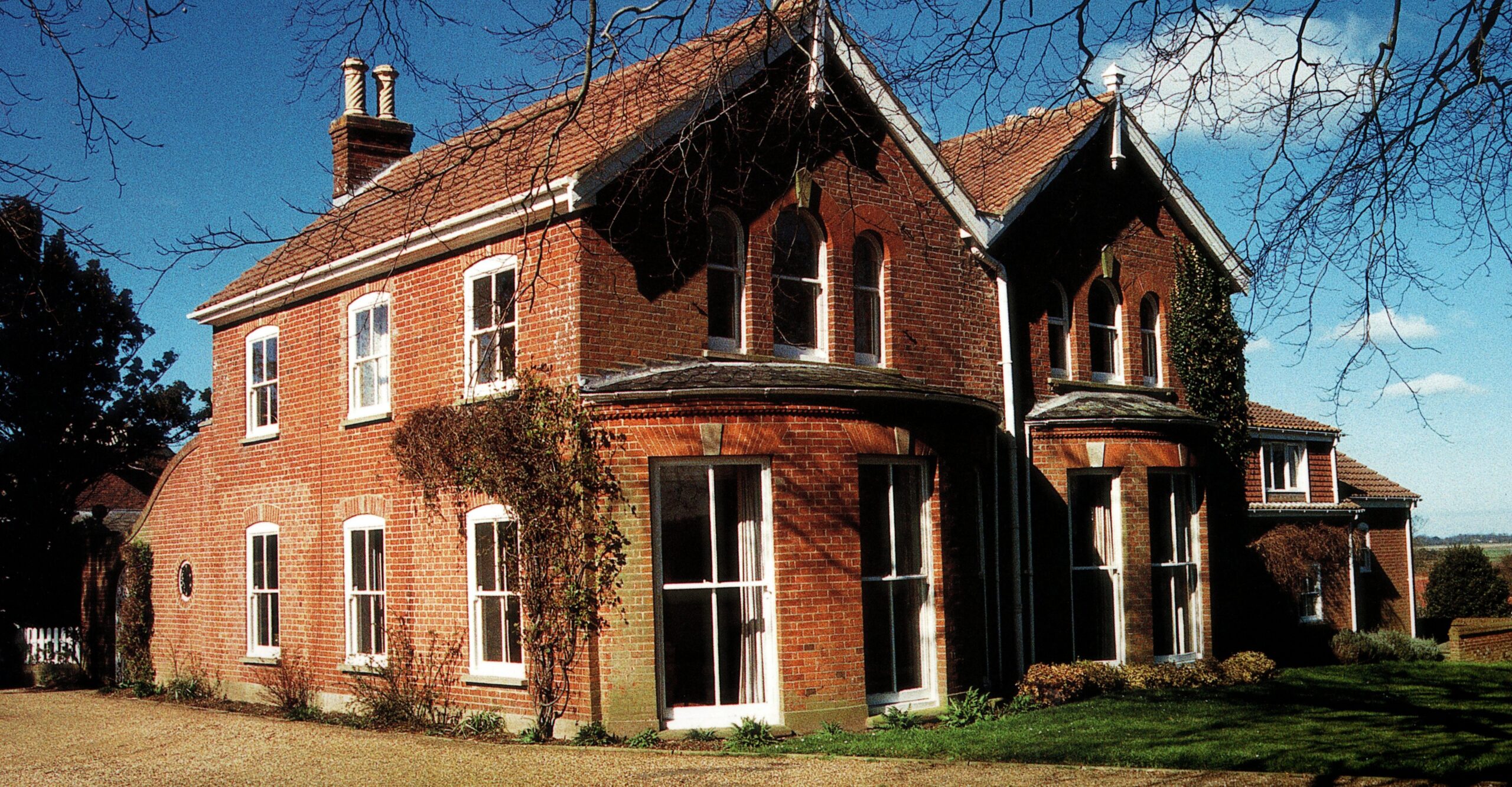
William’s Will was 21 pages longs and very detailed. He appointed his wife, Elizabeth and son, William and friends, Sir Edmund Henry Knowles Lacon of Ormesby St Michael, and Baronet Thomas Browne of Thrigby and the Reverend John Morton of Caister to be executors of the Will. Some of his bequests were:-
- His son William and his heirs – messuages, tenements, etc including Martham House and surrounds plus many pieces of land, property etc.
- His son Benjamin Rising – lands cottages, tenements in Repps.
- His son Thomas Sutfield Rising – marshes and lands lying in Potter Heigham
- His daughter Eliza Rising – a dwelling house, lands and hereditaments in Martham.
- His married daughter Harriet Wells – paintings, books and prints.
- His wife Elizabeth – farming stock, grain, crops, farm buildings, and lands in my occupation situate in Martham and Potter Heigham.
- His nephew Robert Rising – £2 pounds for a mourning ring.
William was a well educated, literate man. He managed a large estate and yet recorded in his diary how he would go hoeing himself. He bred prize winning cattle and horses and liked attending local farm markets and shows. As a leading member of the community he held voluntary posts e.g. churchwarden and overseer; he was on the management board of the Workhouse at Rollesby. He attended St Mary the Virgin services at Martham regularly and made generous donations to church improvements. He seems to have taken great pride in his children encouraging them to attend church. He handled large sums of money and also acted as a money lender or informal banker. He invested in land and property much of which was let. There was also the mystery side; what happened to the marriage with his first wife leading to a long relationship with Elizabeth Howes the mother of his six children? What happened during the missing years when he was between 45 and 56 years old? Perhaps we will never know!
* To get an idea of the range of land and property William owned these are some examples of how the plots have changed in use since 1842.
Plot 81 had a tiny single roomed house on it called a pightle which today has Ribena Bungalow, Cess on it and it was occupied by Isaac Brown.
Plot 142 was where Rose Farm, Cess is now and was occupied in 1842 by Robert Long.
Plot 154 was the land at the junction of Repps Road and Rollesby Road which was once occupied by Comm Tech and now has the Saxon Close residential development on it.
Plot 215 is in Hemsby Road at that awkward little bend where the old barn that existed in 1842 still exists. It is on the south west side of the road next door to Mill Farm House.
Plot 316 is where Cranes Green Cottage/Farm stands on The Green.
Plot 348 is where Bell Yard, White Street stands and where Martham House Barn once stood across the road from The Gatehouse, White Street.
Plot 349 is virtually all the large fields to the east of what was once Martham House, White Street.
Plot 412 is where 54 Damgate is now opposite the lane to Moregrove.
Plot 654 is the land which included Martham House, White Street.
